3728 IRAS, provisional designation 1983 QF, is a stony asteroid from the middle region of the asteroid belt, approximately 20 kilometers in diameter. On 23 August 1983, it was discovered by and later named after IRAS, a spaceborne all-sky infrared survey satellite.
1015 Christa, provisional designation 1924 QF, is a dark background asteroid from the outermost regions of the asteroid belt, approximately 96 kilometers in diameter. It was discovered on 31 January 1924, by German astronomer Karl Reinmuth at the Heidelberg-Königstuhl State Observatory in southwest Germany. The meaning of this asteroids's name is unknown.
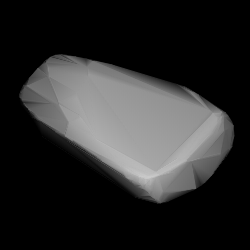
1069 Planckia, provisional designation 1927 BC, is a background asteroid from the outer regions of the asteroid belt, approximately 39 kilometers in diameter. It was discovered on 28 January 1927, by astronomer Max Wolf at the Heidelberg-Königstuhl State Observatory in Germany. The asteroid was named after German physicist Max Planck.
1043 Beate, provisional designation 1925 HB, is a stony asteroid from the outer region of the asteroid belt, approximately 32 kilometers in diameter. It was discovered by German astronomer Karl Reinmuth at the Heidelberg-Königstuhl State Observatory on 22 April 1925. Any reference of its name to a person is unknown.
1064 Aethusa, provisional designation 1926 PA, is a stony background asteroid from the central regions of the asteroid belt, approximately 19 kilometers in diameter. It was discovered on 2 August 1926, by astronomer Karl Reinmuth at the Heidelberg-Königstuhl State Observatory in southwest Germany. The asteroid was named after the plant Aethusa cynapium.
1112 Polonia, provisional designation 1928 PE, is an Eoan asteroid from the outer regions of the asteroid belt, approximately 38 kilometers in diameter. Discovered by Soviet astronomer Pelageya Shajn at Simeiz in 1928, it was the first asteroid discovery made by a woman. The L-type asteroid has a long rotation period of 82.5 hours, and was named for the country of Poland.
1158 Luda, provisional designation 1929 QF, is a stony asteroid from the middle regions of the asteroid belt, approximately 19 kilometers in diameter. It was discovered on 31 August 1929, by Soviet astronomer Grigory Neujmin at Simeiz Observatory on the Crimean peninsula. It was named after Ludmilla Neujmin, the sister of the discoverer.
3037 Alku, provisional designation 1944 BA, is a carbonaceous asteroid from the central region of the asteroid belt, approximately 20 kilometers in diameter. It was discovered on 17 January 1944, by Finnish astronomer Yrjö Väisälä at Turku Observatory in Southwest Finland.
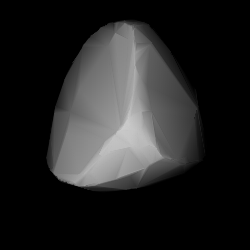
1328 Devota, provisional designation 1925 UA, is a dark background asteroid from the outermost regions of the asteroid belt, approximately 56 kilometers in diameter. It was discovered on 21 October 1925, by Russian–French astronomer Benjamin Jekhowsky at the Algiers Observatory in North Africa. The asteroid was named after Argentine astronomer Fortunato Devoto.
3642 Frieden, provisional designation 1953 XL1, is a carbonaceous asteroid from the middle region of the asteroid belt, approximately 35 kilometers in diameter. It was discovered by German astronomer Herta Gessner at Sonneberg Observatory on 4 December 1953. It is named after the goddess of peace, Pax.
3915 Fukushima, provisional designation 1988 PA1, is a carbonaceous asteroid from the inner regions of the asteroid belt, approximately 21 kilometers in diameter.
2140 Kemerovo, provisional designation 1970 PE, is a dark asteroid from the outer region of the asteroid belt, approximately 30 kilometers in diameter.
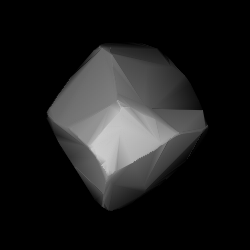
1283 Komsomolia is a metallic background asteroid and potentially slow rotator from the outer regions of the asteroid belt. Discovered by Vladimir Albitsky in 1925, it was later named after Komsomol, a political youth organization of the former Soviet Union. The M-type asteroid has roughly a rotation period 96 hours of and measures approximately 30 kilometers in diameter.
1680 Per Brahe, provisional designation 1942 CH, is a bright background asteroid from the central region of the asteroid belt, approximately 14 kilometers in diameter. It was discovered on 12 February 1942, by Finnish astronomer Liisi Oterma at Turku Observatory in Southwest Finland. The stony S-type asteroid has a rotation period of 3.4 hours. It is named after Swedish count and governor Per Brahe the Younger.

1436 Salonta, provisional designation 1936 YA, is a dark background asteroid from the outer regions of the asteroid belt, approximately 60 kilometers in diameter. Discovered by György Kulin at the Konkoly Observatory in 1936, the asteroid was later named for the Romanian city of Salonta, the birthplace of the discoverer.
1266 Tone is a dark background asteroid from the outer regions of the asteroid belt, approximately 80 kilometers in diameter. Discovered by astronomer Okuro Oikawa at the Tokyo Observatory in 1927, it was assigned the provisional designation 1927 BD. The asteroid was later named after the Tone River, one of Japan's largest rivers.
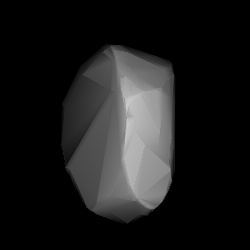
2111 Tselina is a stony Eos asteroid from the outer regions of the asteroid belt. It was discovered on 13 June 1969, by Soviet astronomer Tamara Smirnova at Crimean Astrophysical Observatory in Nauchnij, on the Crimean peninsula. The S-type asteroid has a rotation period of 6.6 hours and measures approximately 23 kilometers in diameter. It was later named after the Soviet Virgin Lands Campaign.
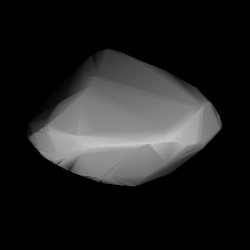
1186 Turnera, provisional designation 1929 PL, is a stony Eoan asteroid from the outer regions of the asteroid belt, approximately 36 kilometers in diameter. It was discovered on 1 August 1929, by South African astronomer Cyril Jackson at the Union Observatory in Johannesburg. The asteroid was later named after British astronomer Herbert Hall Turner.
1282 Utopia is a dark asteroid from the outer regions of the asteroid belt, approximately 55 kilometers in diameter. It was discovered on 17 August 1933, by South African astronomer Cyril Jackson at the Union Observatory in Johannesburg, and given the provisional designation 1933 QM1. The asteroid was named after the fictional island of Utopia.
1708 Pólit, provisional designation 1929 XA, is a very dark asteroid from the outer region of the asteroid belt, approximately 29 kilometers in diameter. It was discovered on 30 November 1929, by Spanish astronomer of Catalan origin Josep Comas i Solà at the Fabra Observatory in Barcelona, and was later named after Catalan astronomer Isidre Pòlit i Boixareu.






